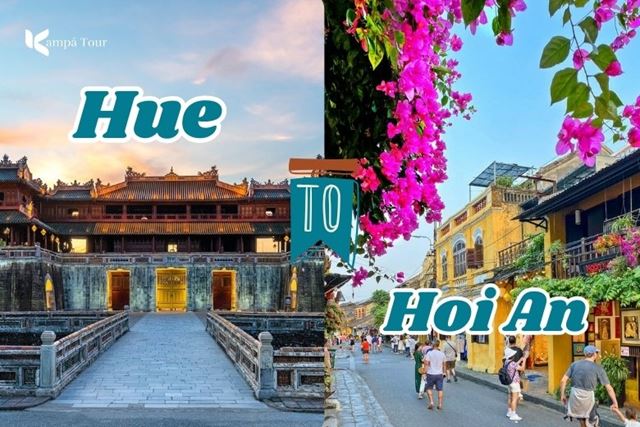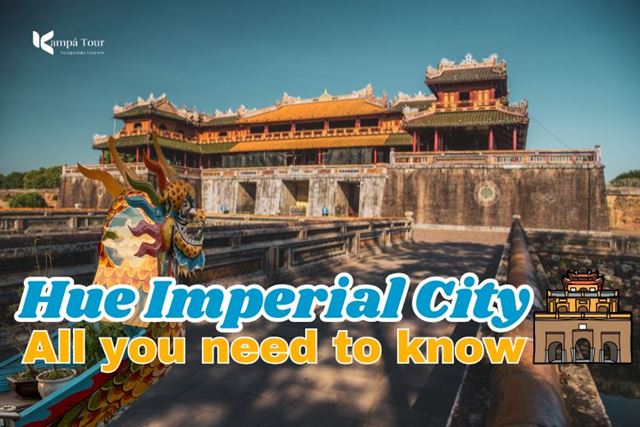- Destinations
- Travel Styles
- About Us
- Contacts
- Destinations
- Travel Styles
- About Us
Set along the banks of the Perfume River (Sông Hương), the Thien Mu Pagoda, or "Pagoda of the Celestial Lady" as it is subtitled in the English language, embraces all its majesty with ancient architecture that emphasizes the natural beauty of the place. The bells of Thien Mu, the soul of the city of Hue, oftentimes resonate along this river.
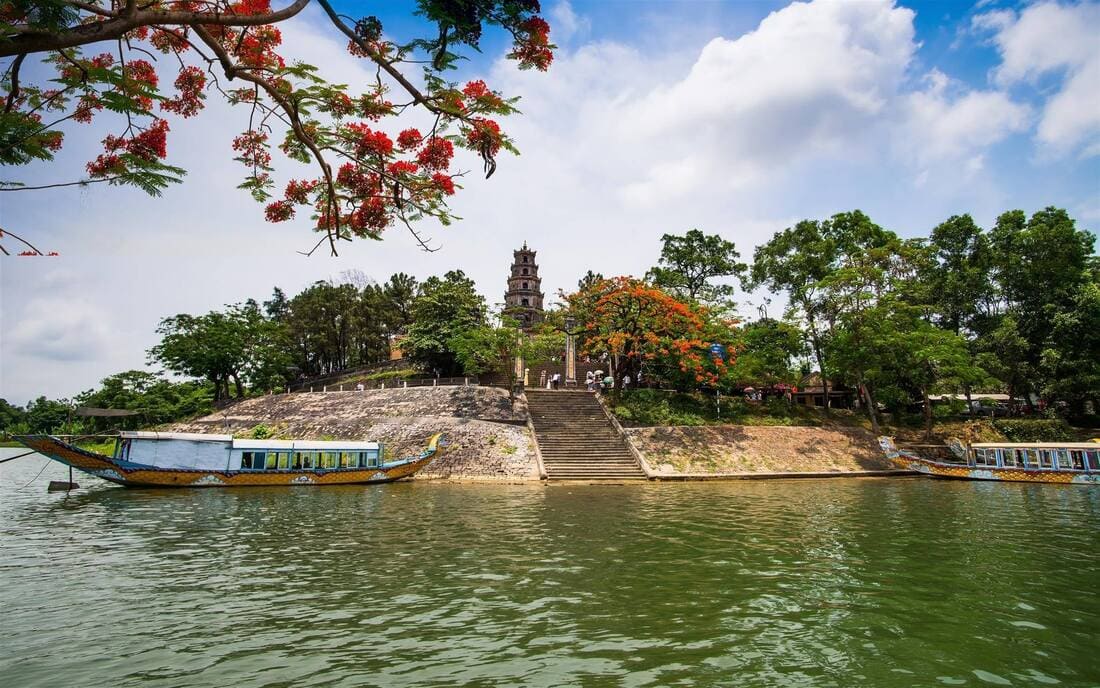
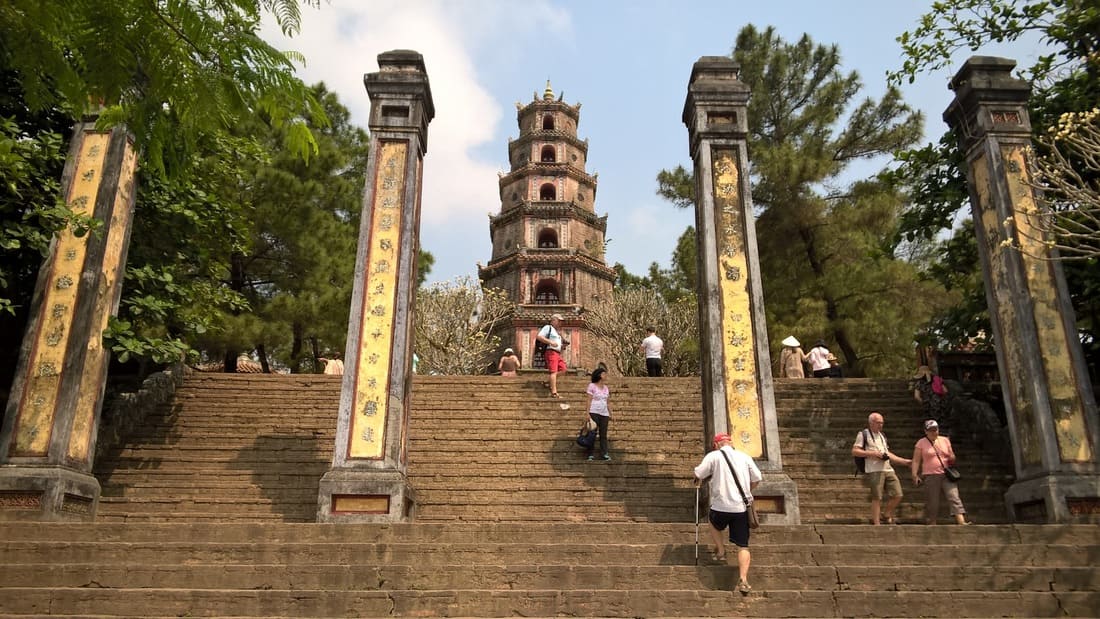
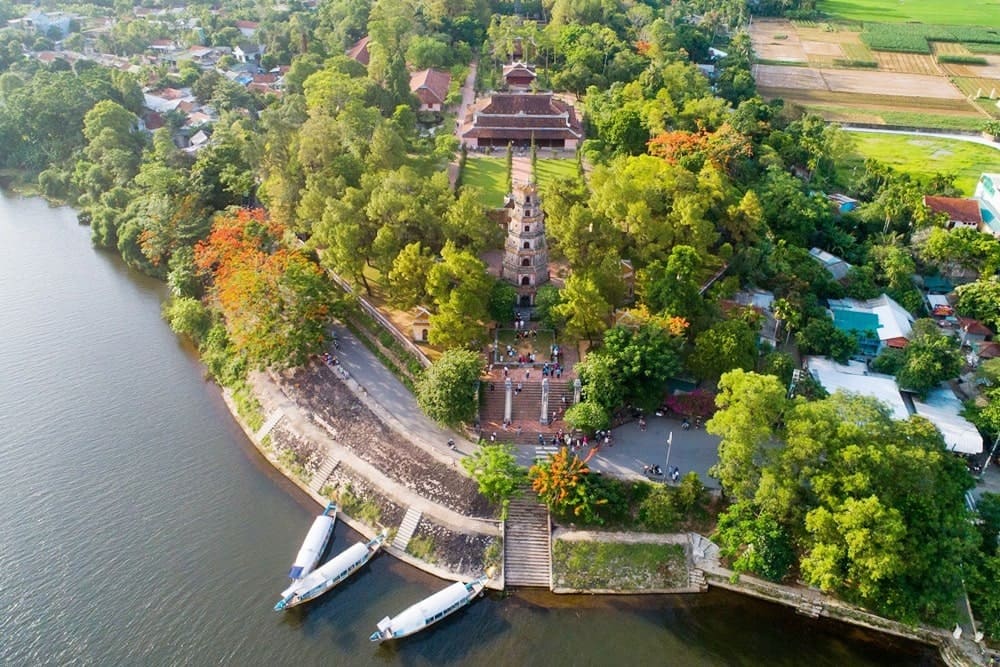
The first step on the stairway to reach the Thien Mu Pagoda is not hard to make. The first impressions of its location and architecture, surrounded by a stunning landscape, can hardly fail to impress. If you look back, you will find the Perfume River, which winds gently just behind the temple.
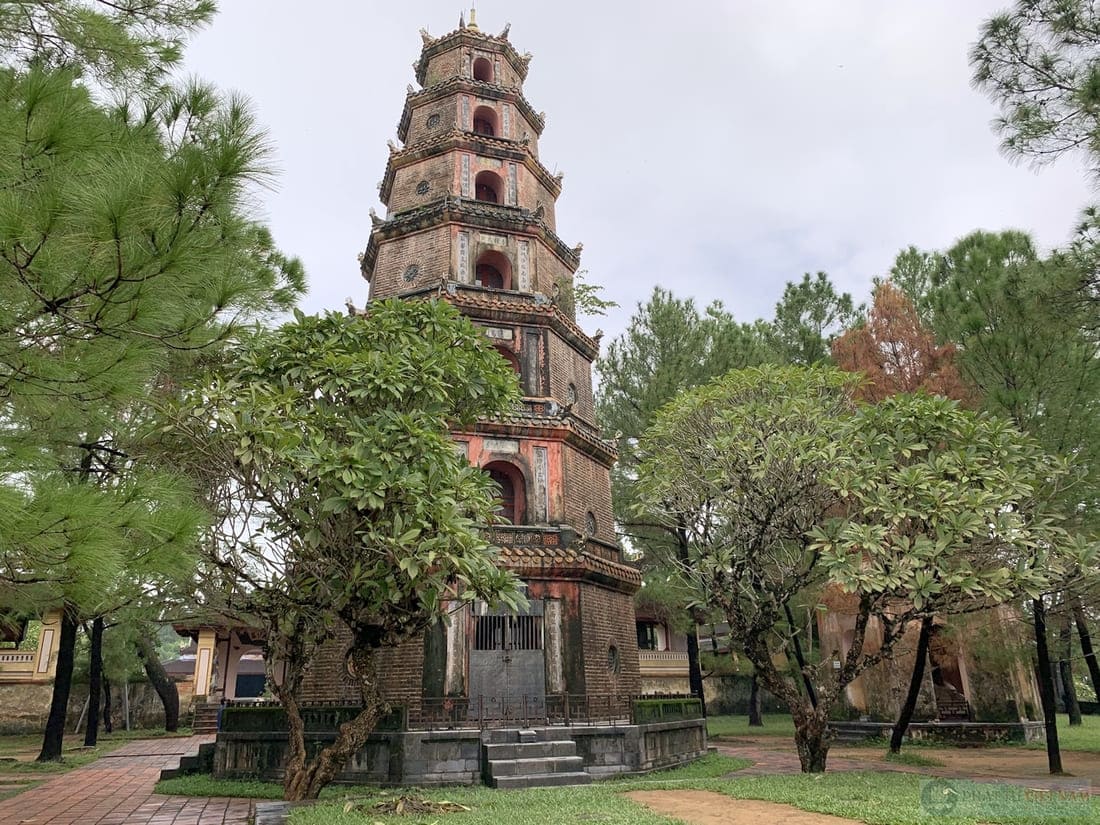
Reaching Tam Quan Gate is the first step when one arrives at the Thien Mu Pagoda, as it serves as the main entrance. The structure features three passages, each fitted with wooden doors secured by sturdy nails, symbolizing the three worlds: Beings, Spirits, and Deities.
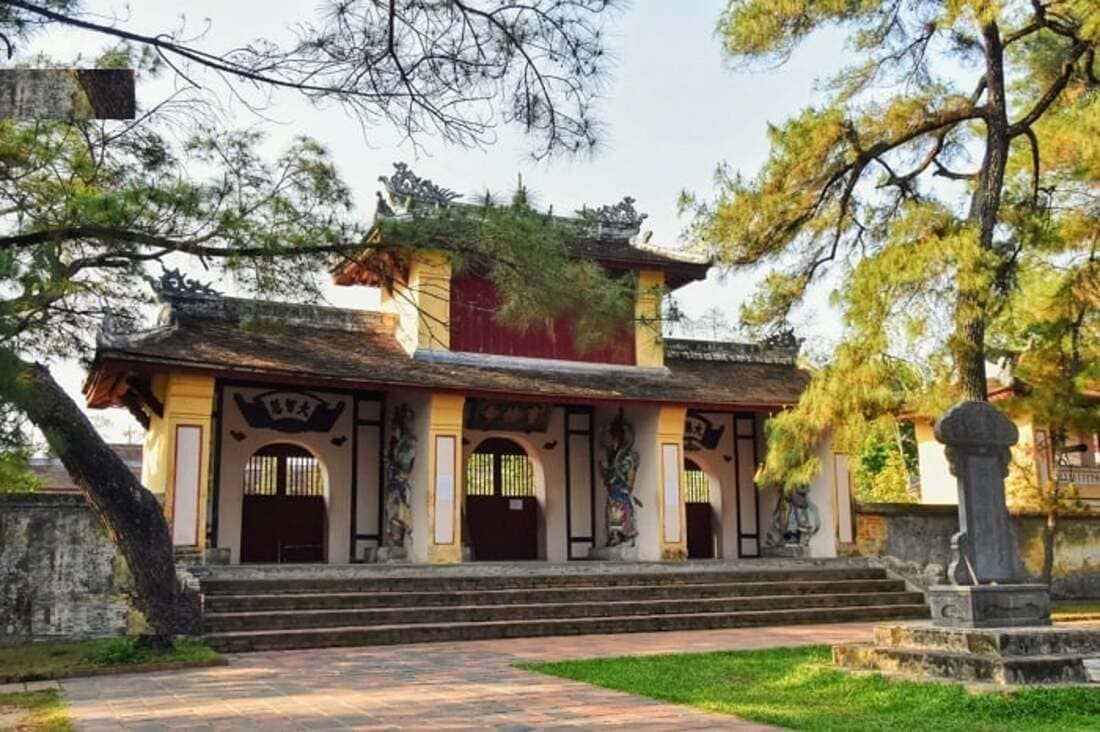
Phuoc Duyen Tower - a magnificent construction atop the heavenly paradises in the tower called Thien Mu Pagoda. It is a magnificent 21-metre-tall structure with the dimension of 7 floors made with unfired bricks and dressed stones. The whole tower is entered through spiraling staircase located at one entrance and gives way to all the floors of the tower. It has different images of Buddhas on each of its floors and has a golden Buddha statue at the summit.
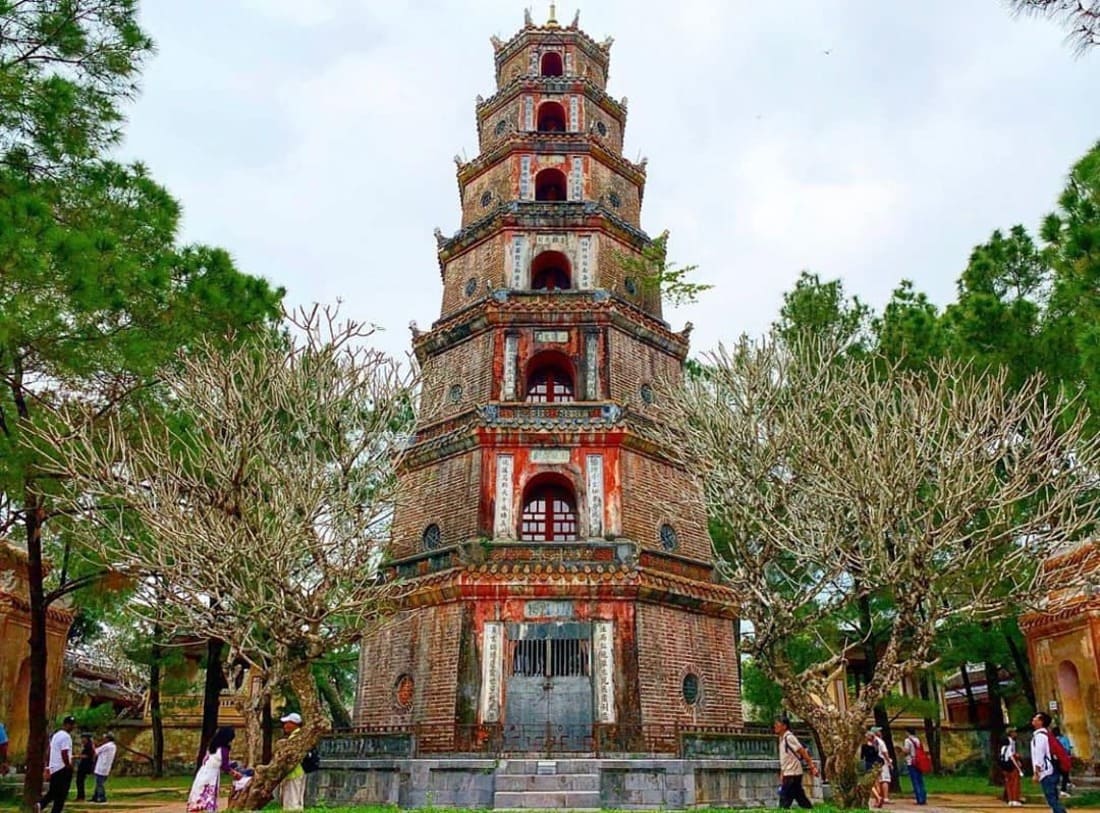
.jpg)
The Great Hung Shrine (Đại Hùng) is the central building of the Pagoda of the Celestial Lady (Thien Mu). It represents impressive constructional architecture. Inside, in addition to the bronze statue of Buddha, there are many other statues as well as a bronze bell cast in 1677. A large wooden panel, lacquered and gilded, also adorns the shrine, donated by Lord Nguyễn Phúc Chu in 1714.
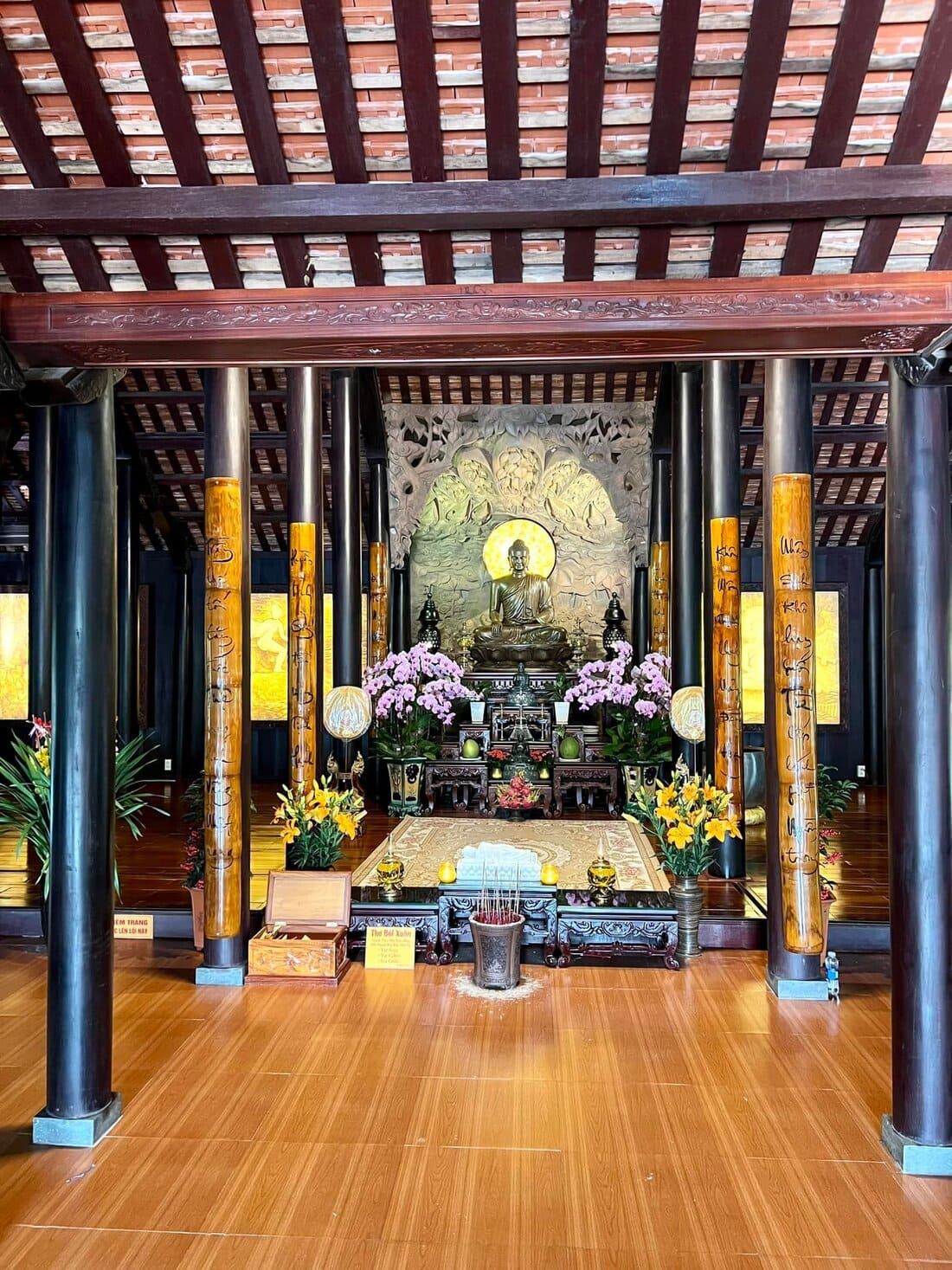
As one enters the deeper parts of the pagoda, he would find the funeral vehicle used in the funeral rites of the great and venerable Hòa Thượng Thích Quảng Đức, who immolated himself in 1963 in protest against the regime in Saigon. Now, almost half a century has elapsed, but that old Austin, even though it has been so long, retains a sense of modernness and elegance. Although the rust marks visible on the surface 'speak' to the nature of age, it, on the other hand, has become a living witness to the patriotic and glorious event, such as that of this spiritual master.
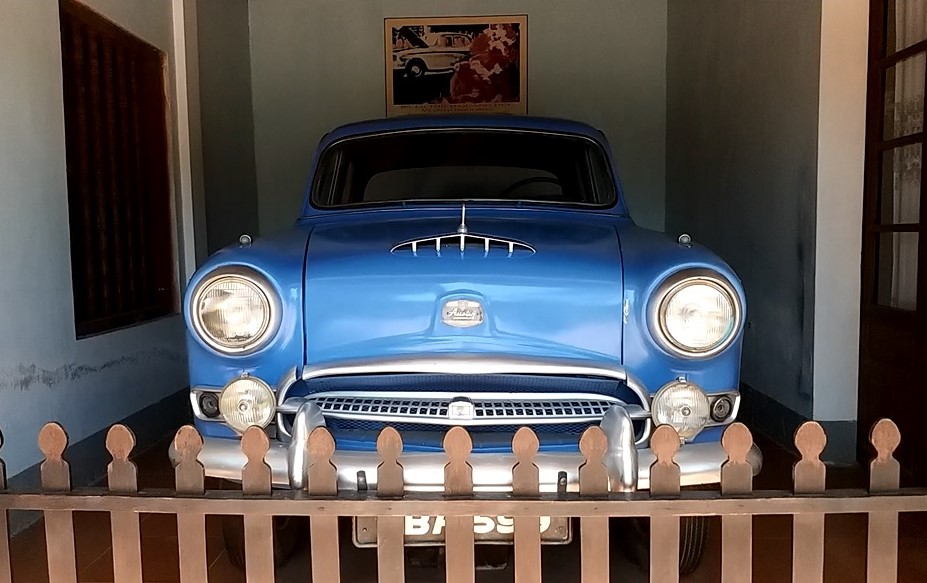
All the way down at the bottom of the garden is the burial site of the Venerable Thích Đôn Hậu, one of the best-known former abbots of the Pagoda of the Celestial Lady, an esteemed personage who devoted his life to the religious promotion of Buddhism in Vietnam. He is also honored by people for his many social charities works for the benefit of the poor.
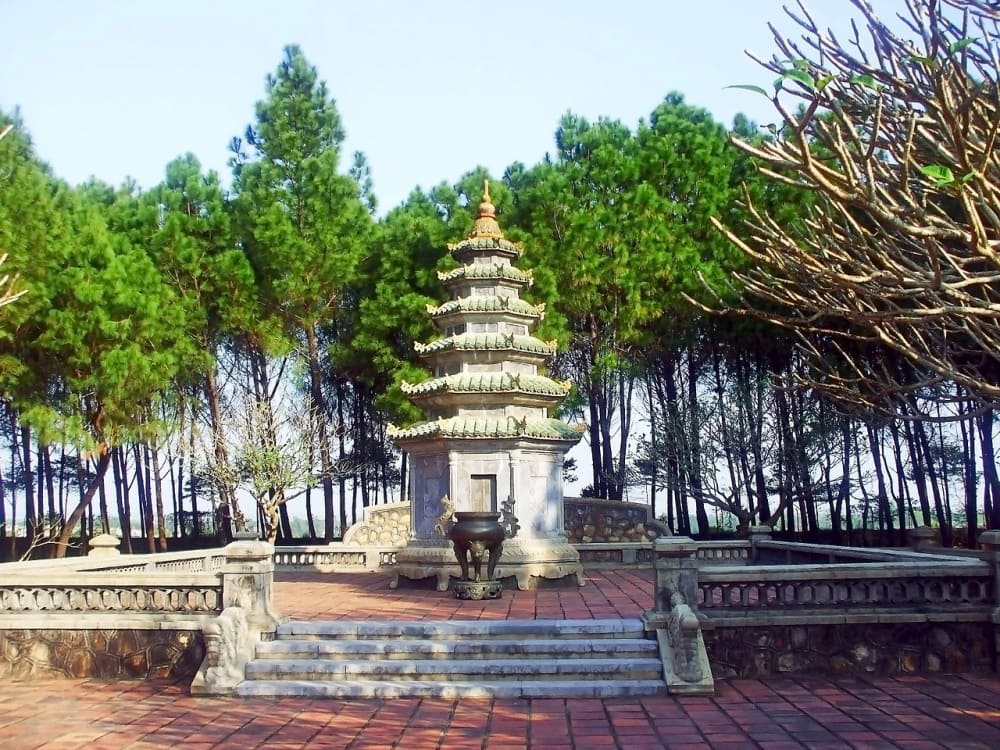
The year 1993 was the time when the Monumental Complex of the City of Hue, a former province of the Imperial City of Hue, was inscribed on the World Heritage List by UNESCO, including the Thien Mu Pagoda (found among the monuments outside the imposing boundaries of the Imperial City).
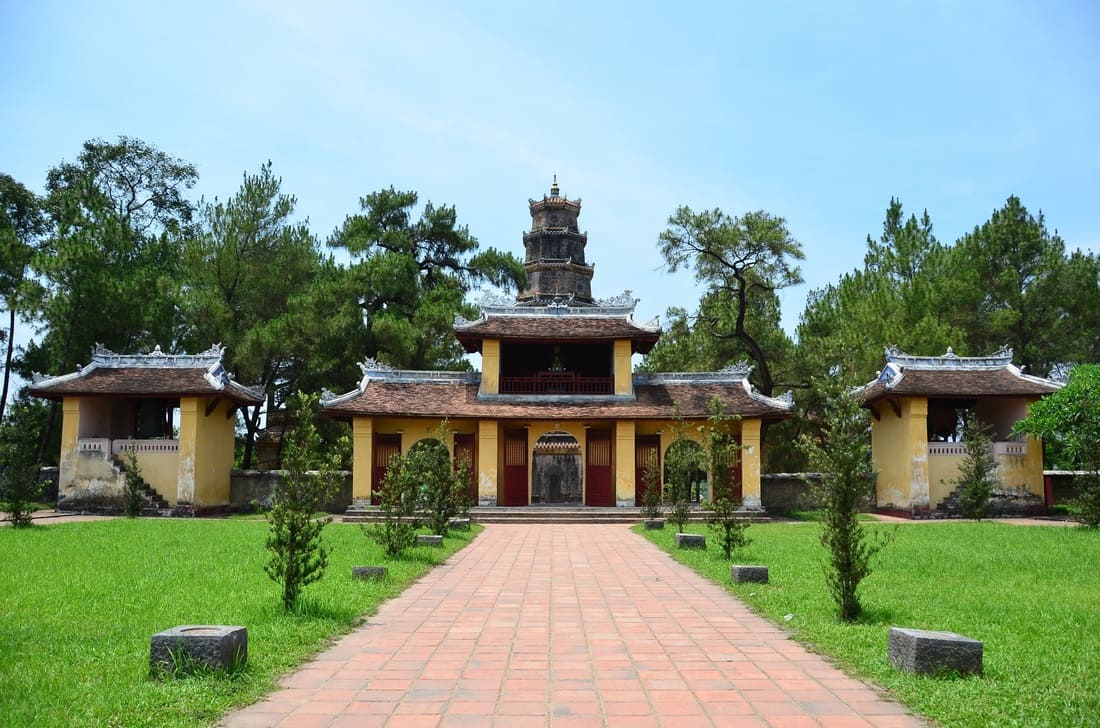
One of the most unique and proud legacies of this Thien Mu Temple is the Great Bell. It symbolizes a huge bronze gong, showcasing the greatness of the art of refined bronze casting and its deep spiritual significance. Declared a national treasure in 2013, this bronze bell is not only an important ritual instrument in the temple but also embodies the spirit and philosophies of East Asia.
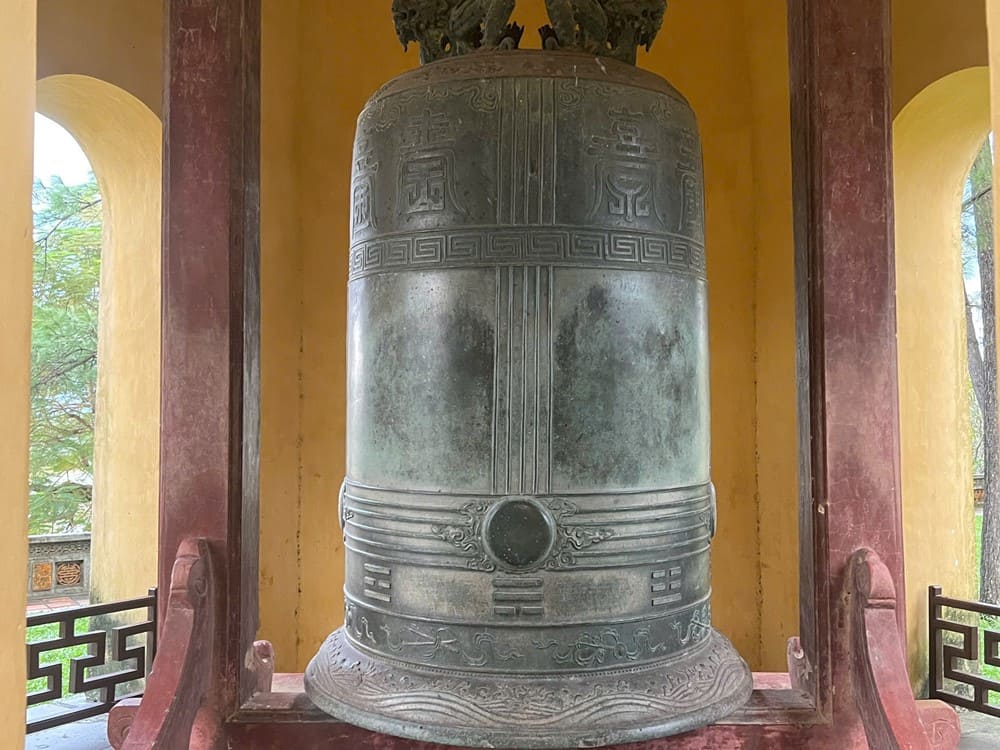
And the perceptions of great cocoons in the large bell (Đại Hồng Chung) resound with harmony and integration into the three major philosophical traditions of East Asia: Buddhism, Confucianism, and Taoism. The pagoda bell must be the soul of Huế, one that resounds through the waters of the Hương River, starting from the imperial city and heading toward the sea, periodically leaving a mark on the hearts of travelers coming to Hue...
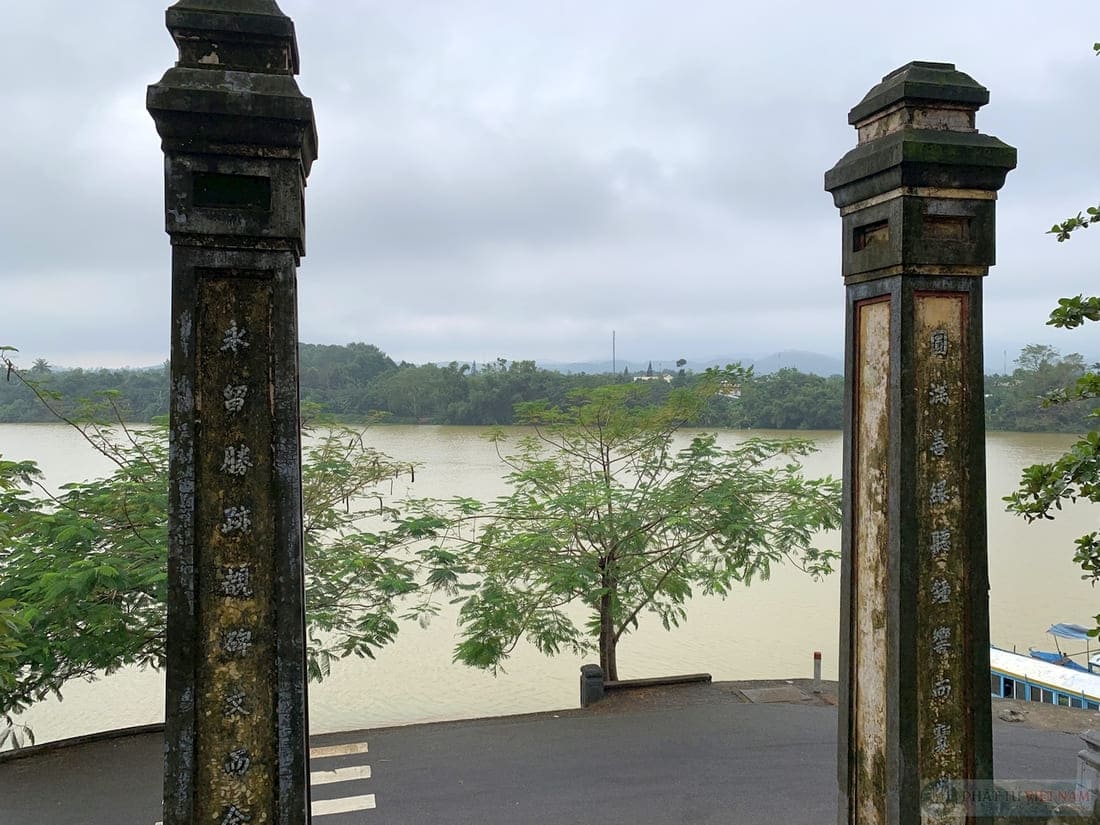
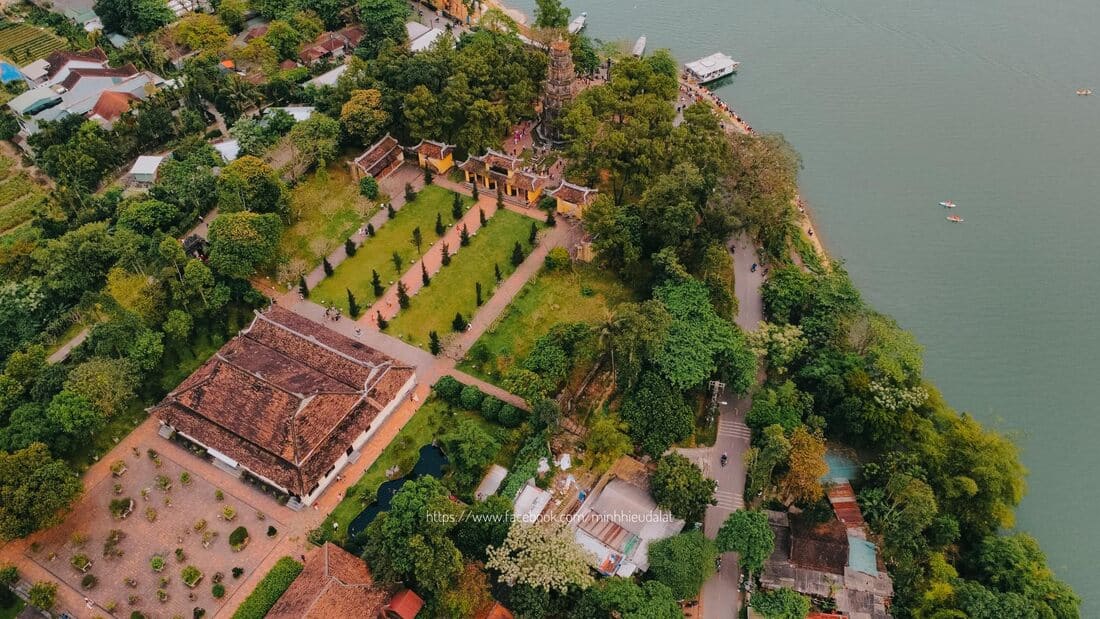
When Is the Best Time to Visit Thien Mu Pagoda in Hue?
You can visit the Imperial City of Hue and the Thien Mu Pagoda at any time of the year except during the rainy season. The rainy months in Hue are generally from October to December, so the other months would be a good time to visit.
If you want to see Thien Mu Pagoda with its colorful flowers blossoming all around one corner of the temple, visit in May or June.
Because of its unique architecture, rich cultural heritage, and peaceful atmosphere, Thien Mu Pagoda must be listed as a place to visit not only in Hue but in the whole of Vietnam.
Source: Internet

